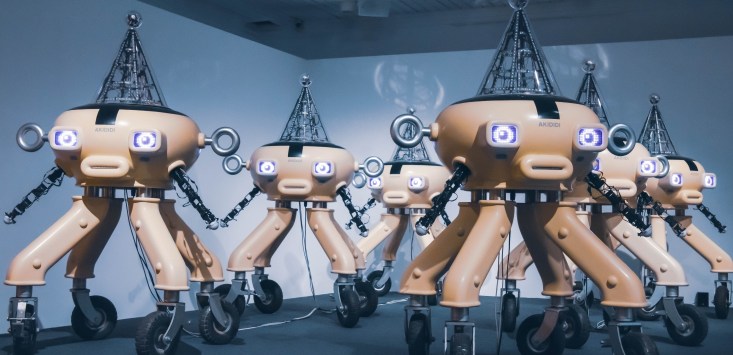
Source: Unspalsh/Ticka Kao
Tools like ChatGPT could add tens of billions of dollars to the Australian economy by swallowing up repetitive manual tasks and making workers much more productive.
With Australia’s sluggish productivity growth threatening the timely return of inflation to target and overall prosperity, tech industry research has mapped out the efficiency-boosting potential of generative artificial intelligence.
The research from the Tech Council of Australia and Microsoft claims the technology could add as much as $115 billion to the Australian economy annually within seven years, with the bulk of those gains eked out through higher productivity.
It could translate to a 2-5% uplift in economic growth, depending on how rapidly Australia adopts it.
The research, prepared by Accenture, found 70% of the economic value would come from an uplift in productivity across existing industries.
Another 20% would come through quality gains and 10% from new products and services.
Microsoft ANZ chief technology officer Lee Hickin said Australia was facing a “massive economic opportunity” and was tracking in the right direction to capture its benefits.
Australian businesses are already rushing to integrate the technology into their operations and the federal government is starting work on regulating the sector, which Hickin told AAP would be critical to its successful take-up.
While the technology has generated a lot of excitement, it has also stoked fears of job losses to automation.
Hickin said it would be an “additive” technology and would assist workers in their work, rather than replace them.
“In order to build into that productivity growth that the country needs to move into, we actually need people to deliver more with the time they have,” he said.
“And the only way we can do that is by giving them tools and technology that allow them to operate at a high level, and AI is the tool to do that.”
His remarks come as Reserve Bank boss Philip Lowe ratchets up his concerns about slow productivity growth, warning it could cause economic and social challenges.
The technology’s ability to help workers do more with less comes down to its ability to automate repetitive tasks and serve as a “copilot” for more complex tasks.
In software development, for example, generative AI-powered tools are able to suggest entirely new ways to solve a problem and speed up the process.
At its present level of maturity, the technology has the potential to automate and augment 44% of Australian workers’ task hours, freeing up time for higher-value work and increasing the quality of their output.
Hickin said Australia was well-placed to be an early adopter of the technology based on how it jumped on cloud computing and other opportunities.
Australia also has a strong and growing tech workforce which he said was a “good breeding ground” for early adoption.
Tech Council chief executive Kate Pounder said Australia needed to act swiftly to capture the “depth and breadth” of the opportunity.
“This isn’t just about technological advancement — it’s about Australia taking a leadership role on the global stage,” Pounder said.
This article was first published by AAP.
Handpicked for you

RBA governor blames labour growth – not price gouging – for inflation



COMMENTS
SmartCompany is committed to hosting lively discussions. Help us keep the conversation useful, interesting and welcoming. We aim to publish comments quickly in the interest of promoting robust conversation, but we’re a small team and we deploy filters to protect against legal risk. Occasionally your comment may be held up while it is being reviewed, but we’re working as fast as we can to keep the conversation rolling.
The SmartCompany comment section is members-only content. Please subscribe to leave a comment.
The SmartCompany comment section is members-only content. Please login to leave a comment.